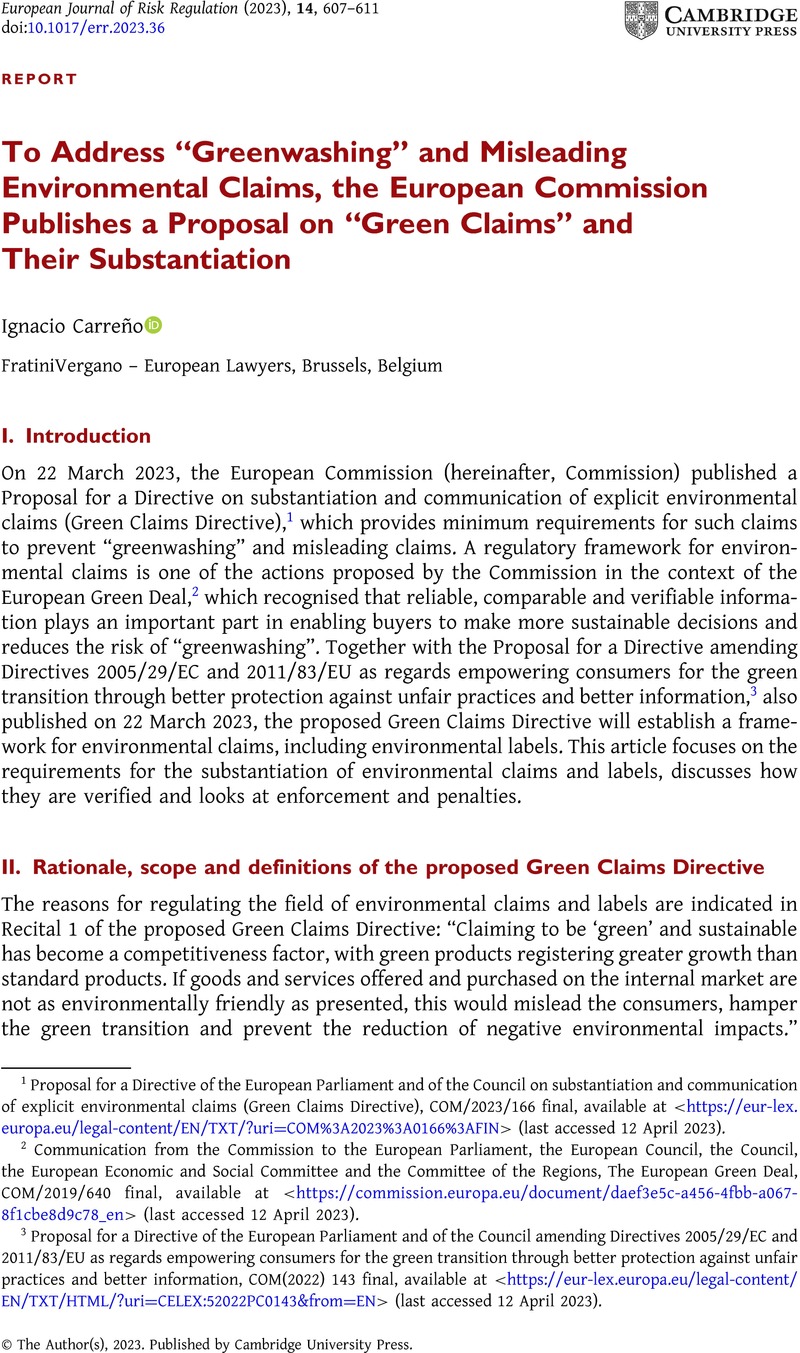Published online by Cambridge University Press: 22 May 2023

1 Proposal for a Directive of the European Parliament and of the Council on substantiation and communication of explicit environmental claims (Green Claims Directive), COM/2023/166 final, available at <https://eur-lex.europa.eu/legal-content/EN/TXT/?uri=COM%3A2023%3A0166%3AFIN> (last accessed 12 April 2023).
2 Communication from the Commission to the European Parliament, the European Council, the Council, the European Economic and Social Committee and the Committee of the Regions, The European Green Deal, COM/2019/640 final, available at <https://commission.europa.eu/document/daef3e5c-a456-4fbb-a067-8f1cbe8d9c78_en> (last accessed 12 April 2023).
3 Proposal for a Directive of the European Parliament and of the Council amending Directives 2005/29/EC and 2011/83/EU as regards empowering consumers for the green transition through better protection against unfair practices and better information, COM(2022) 143 final, available at <https://eur-lex.europa.eu/legal-content/EN/TXT/HTML/?uri=CELEX:52022PC0143&from=EN> (last accessed 12 April 2023).
4 Available at <https://eur-lex.europa.eu/legal-content/EN/TXT/?uri=celex%3A32005L0029> (last accessed 12 April 2023).
5 Proposal for a Directive of the European Parliament and of the Council amending Directives 2005/29/EC and 2011/83/EU as regards empowering consumers for the green transition through better protection against unfair practices and better information, COM(2022) 143 final, available at <https://eur-lex.europa.eu/legal-content/EN/TXT/HTML/?uri=CELEX:52022PC0143&from=EN> (last accessed 12 April 2023).
6 “Similar to the nutritional label Nutri-Score, the environmental or ‘green’ label Eco-Score appears on front-of-packs in the EU – Mere marketing tools?”, Trade Perspectives, Issue No. 8 of 23 April 2021, available at <http://www.fratinivergano.eu/en/trade-perspectives/23-april-2021/#_Similar_to_the> (last accessed 12 April 2023).
7 Regulation (EC) No 765/2008 of the European Parliament and of the Council of 9 July 2008 setting out the requirements for accreditation and market surveillance relating to the marketing of products and repealing Regulation (EEC) No 339/93, OJ L 218, 13.8.2008, pp 30–47, available at <https://eur-lex.europa.eu/legal-content/EN/TXT/?uri=CELEX%3A32008R0765> (last accessed 12 January 2023).
8 Commission Staff Working Document, Impact Assessment Report, accompanying the document Proposal for a Directive of the European Parliament and of the Council amending Directives 2005/29/EC and 2011/83/EU as regards empowering consumers for the green transition through better protection against unfair practices and better information, available at <https://eur-lex.europa.eu/legal-content/EN/TXT/PDF/?uri=CELEX:52022SC0085> (last accessed 12 April 2023).